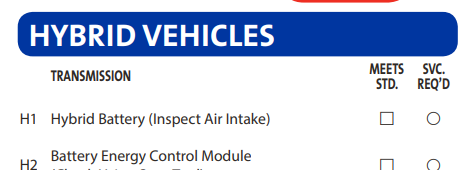Auditing Standards and Frameworks
Standards and Frameworks for recording and exchanging audit data

- Part 1: Infrastructure Testing With Pester
- Part 2: This Article
One aspect of Infrastructure testing is to ensure that systems and services meet a standard. That standard may be yours, your company’s, or one published by a government, group or organization. When it comes to cybersecurity, there are several standards but (in my experience) the two major standards organizations are:
- National Institute of Standards and Technology (NIST)
- Center for Internet Security (CIS)
Terminology
Before I get into the specifics of these two standards, I want to take a minute to define some terms.
- Test : A measurement of a configuration item or process.
- Control : A specific action (countermeasure) taken on a configuration item or process.
- Profile : A categorization of
Controlsthat achieve a prescribed level of acceptance. - Grouping : A logical collection of related
Controls - Checklist : A collection of
Controls, logically grouped by the user, group or organization. - Benchmark : A specialization of
Checklist, defines an established collection of controls in order to meet a “measurement milestone”.
To make that a little more clear, I’ll try to relate it to something different….
 Let’s say I want to buy a car from a used-car lot. I want to ensure the car is going to last and is in good
working order, but I’m far from an expert in automotive maintenance. So, I head to the internet and search for
“Chevrolet pre-owned car”. After a couple of clicks, I find a 172-Point Checklist
Let’s say I want to buy a car from a used-car lot. I want to ensure the car is going to last and is in good
working order, but I’m far from an expert in automotive maintenance. So, I head to the internet and search for
“Chevrolet pre-owned car”. After a couple of clicks, I find a 172-Point Checklist

Ok, now that I have the Checklist, I can see that one of the Groupings is “Check Tires and Brake Pads”, there
is a minimum tire depth Control. To validate the Control, I would measure (that is Test) the tire tread depth
of each tire, if they are >= 5/32nds they pass the Test, and if all four pass, then they pass the Control.

Notice the “Hybrid Vehicles” section at the end? If the car I wanted to buy was a hybrid, then I would use
the “Hybrid Vehicles” Profile which would change which Controls applied to this car from this Checklist.

The process continues through each of the Groupings until I complete the Checklist. If all of the tests pass, I
can say that this meets the Benchmark of “Chevrolet certified pre-owned vehicle”.
Test
In relation to Infrastructure testing, a Test is the atomic unit. It is a comparison between an expected value
and the actual value. In the following example:
(Get-ADDefaultDomainPasswordPolicy | Select-Object -ExpandProperty 'PasswordHistoryLength') -ge 5
The expected value is 5, the comparison is greater-than or equal to (-ge) and the actual value is what is returned from querying AD, and the result is a boolean value.
In programming, these types of tests are also called “assertions”, so in english this could be expressed like:
Assert that the Password History Length is greater-than or equal to 5
Control
A Control is something that can be measured and marked as “Pass” or “Fail”, and has associated “metadata”. For
example:
Example
Id: 5.2 Title: “Use Unique Passwords” Function: Protect Description: “Use unique passwords for all enterprise assets. Best practice …”
Grouping
A logical collection of related Controls to aid in categorizing and organization.
Profile
Example
Id: L1 Name: Level 1 Title: “Corporate/Enterprise Environment”
Checklist
Benchmark
Id: 1.1.1
Title: “Ensure ‘Enforce password history’ is set to ‘24 or more passwords’”
Description: “This policy setting determines…..”
Rationale: “The longer a user uses the same password, the greater…..”
Impact: High
Profile: L1
Controls: 5.2